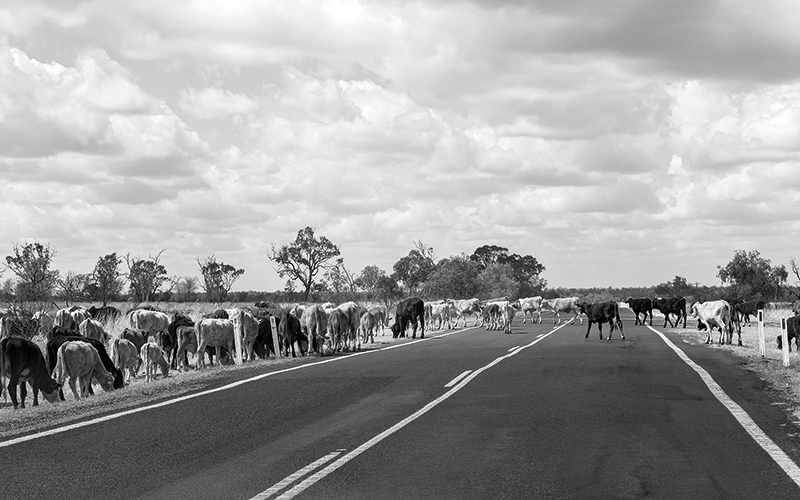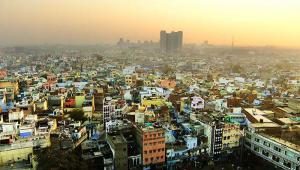
It was an iconic moment. In September 2019, the then-16-year-old Swedish climate activist Greta Thunberg grabbed the attention of the world during an address to the United Nations Climate Action Summit. Criticising a basic belief underpinning large swathes of global economic policy – that the more we produce, the better off we are – she said: “We are in the beginning of a mass extinction, and all you can talk about is money and fairytales of eternal economic growth. How dare you?”
For the best part of a century, following the UN Monetary and Financial Conference at Bretton Woods in the US in 1944, one main measure of output – gross domestic product – has been the principal measure of a country’s economic success. Ever since, industrial economies have chased output, and the resultant activity – much of it powered by fossil fuels – has left the planet in a climate emergency. Politicians are increasingly aware of the crisis, and in recent years have begun setting goals to lower emissions.
Some targets, such as those set in Paris in 2015, aim to completely eliminate or offset greenhouse gas emissions. ‘Net-zero’ targets have been set by governments of all levels, most often with an end date of 2050. Around the world, 13 jurisdictions have put theirs into law, led by Sweden, Denmark, France, Hungary, New Zealand and the UK. But are these efforts doomed if the world fails to end GDP’s stranglehold on mainstream economics?
“The problem with GDP is what it measures and what it fails to measure,” says the UK’s first Green Party MP, Caroline Lucas. “It measures quantity but not quality and assumes that economic growth can continue ad infinitum, even though we live on a planet with finite resources. It ignores values like people’s health and wellbeing, social cohesion and the health of the environment, which for too long have been treated as completely expendable.” Even worse, she says, “GDP actually measures the destruction of nature as economic gain”.
Many believe that GDP has outlasted its usefulness. “As economies evolve, so should our tools of measurement,” says Matthew Agarwala, economist at Cambridge University’s Bennett Institute for Public Policy. “GDP was a tool that was fit for the mid-20th century, because what mattered for most people in most parts of the world was to produce more widgets.”
Growth of GDP, which Agarwala says is “a decent measure of the magnitude of output”, has coincided with “unparalleled improvements in the human condition” – even in left-behind parts of the world. But since the beginning of the Industrial Revolution, the world has emitted 1.5 trillion tonnes of carbon dioxide, and production has resulted in the depletion of natural resources and the destruction of habitats. “These environmental and social pressures are now so great that they threaten to wipe out the entire previous century’s gain,” says Agarwala.
Flawed thinking
Using GDP as the basis for economic policy is centred on a fundamentally flawed accounting philosophy, Agarwala says. Because GDP is a measure purely of income, it fails to account for the effect on assets of all kinds – including capital, human infrastructure and social, as well as natural, assets. “A country might cut down a forest because timber was at a premium, but the next year it would have no forest,” he says.
This is a problem felt particularly keenly by developing countries, says Leonardo Garrido, lead economist at The New Climate Economy, a Washington-based project set up to research policies that might both boost the economy and reduce the risks of climate change. “Developing countries rely on primary resources as a means to create value,” says Garrido. “The extent to which they rely on these resources that they then degrade makes it hard to advance.”
Some believe the solution is ‘degrowth’ – if seeking ever-higher GDP leads to destructive consumption, then scaling back consumption will temper climate change, or so the argument goes. Garrido disagrees, pointing to the human gains made during periods of growth. “It is a nice concept,” he says, “but because, in practice, everything is connected, it is hard to think that wellbeing would not suffer.”
Instead he advocates ‘decoupling’ – aiming to retain growth while reducing emissions. He says it is important to reduce the amount of energy it takes to increase GDP and the amount of carbon dioxide that energy produces. However, “this discussion is not happening at speed,” he warns.
“One of the reasons there is not a faster transition towards sustainability is the fear of short-term trade-offs. This means that politicians, when making decisions whose consequences coincide with the time they are in office, do not take action in the short term,” Garrido backs policies that promote industrial innovation in areas such as renewable energy.
One of the reasons there is not a faster transition towards sustainability is the fear of short-term trade-offs

Social capital
Agarwala goes a step further, suggesting other measures to value the things GDP misses. He points to the UN’s Inclusive Wealth Index, which measures assets providing human wellbeing, including manufactured, human and natural capital. The Changing Wealth of Nations report by the World Bank does a similar thing, and in 2021 will add a chapter on social capital, comprising measures including trust in institutions, sense of community and neighbourly cooperation. Agarwala says this marks important progress, even if social capital will not be listed in quantitative terms.
In March, the UN adopted its System of Environmental-Economic Accounting framework, which seeks to integrate economic and environmental data and put a value on the benefit that environmental assets bring to humanity. “That is a massive step forward, because now we have a global standard for how natural capital can be accounted for in a consistent way,” Agarwala says.
It will take years, perhaps even decades, for the framework to rival GDP, but that makes it no less exciting, he says. “Once we compile these accounts, economic decisions can be made, based on the full suite of assets that societies have at their disposal,” he says. “And we will be able to track and hold governments to account when they behave unsustainably.”
Some governments are showing more initiative than others. New Zealand announced its Living Standards Framework, similar to OECD standards, in 2011. Since then, it has updated the framework twice, including indicators for ‘net greenhouse gas emissions’ and ‘renewable energy’ from 2019.
Wellbeing analysis
The LSF’s “primary purpose is to inform NZ Treasury advice to the government on policy priorities for improving wellbeing, such as budget priorities and wellbeing and stewardship reporting”, says Diana Cook, deputy chief economic adviser and manager [of] economic capability at the New Zealand Treasury. Public agencies must include wellbeing analysis and evidence in budget submissions, and the Treasury must prepare a wellbeing report every four years, evaluating whether progress is sustainable. The first edition is coming in 2022.
Cook says farming rules passed last year aimed at stopping the degradation of rivers are evidence of the framework’s impact. However, she admits: “Much of this work is new and we are all still learning how to do it well.”
The complexity of valuing natural capital has made it difficult to measure the impact of some initiatives, she adds. Stats NZ’s wellbeing data set has been able to populate only nine of its 24 natural capital indicators with information. Sharing learning with other governments – particularly Scotland, Wales, Canada, Finland and Iceland – has led to some progress in measurement, however.
Lucas says it is “fantasy” to expect that continuously driving up consumption will have no consequences for the planet. “National and sub-national governments around the world are trying to move beyond GDP, looking to new measures of progress with a focus on people’s health and wellbeing and the health of the environment. The UK urgently needs to get on board, addressing the climate and nature crises together. That starts by acknowledging the elephant in the room – our economic model and its focus on GDP is the root cause of the crises we face.”
Opinion is split on what part GDP can play as humanity tries to temper its contribution to climate change. Policymakers are making progress on other measures and frameworks either to complement or replace GDP. These will surely play a big part in the future of economic policy, but the jury is out on whether they can be adopted in time to limit temperature rises to safe levels.
Alternative approaches
- United Nations ‘Inclusive Wealth Index’
A biennial report measuring the ‘social value’ of a country’s natural, human and produced capital assets. It aims to represent the trade-offs between different conservation and development policies. It so far suggests that the decline of natural capital since 1990 has been more than offset by growth in human and physical capital.
- World Bank ‘The Changing Wealth of Nations’
A 2018 report measuring 141 countries’ produced, natural and human capital, as well as their net foreign assets. It was designed to help governments “plan for a more sustainable future”. But it was always aimed at being used alongside GDP and encouraging economic growth.
- System of Environmental-Economic Accounting
Adopted by the UN Statistical Commission in March, the SEEA is aimed at drawing attention to the impact of economic activity on the environment. It is built on five ‘core accounts’, which measure the area, condition, contribution, value and stocks of ecosystems. At least 34 countries are compiling these statistics on an experimental basis.
- Gross National Happiness Index
Pioneered in Bhutan (see Viewpoint, p48), GNH provides a snapshot of a population’s wellbeing. Versions have been adopted in bIn Victoria, Canada; São Paulo, Brazil; and Seattle, US.
- ‘Doughnut economics’
First published in a report by economist Kate Raworth in 2012 and developed further in her 2017 book, ‘doughnut economics’ is based on two concentric circles. The first is the ‘social foundation’ – containing human needs, such as water, housing, equality, peace and education. The second is the ‘ecological ceiling’ – representing the boundaries of the planet’s ability to support life, such as pollution, ocean acidification and ozone layer depletion. It aims to replace GDP, substituting the focus on ‘growth’ with the concept of ‘thriving’













